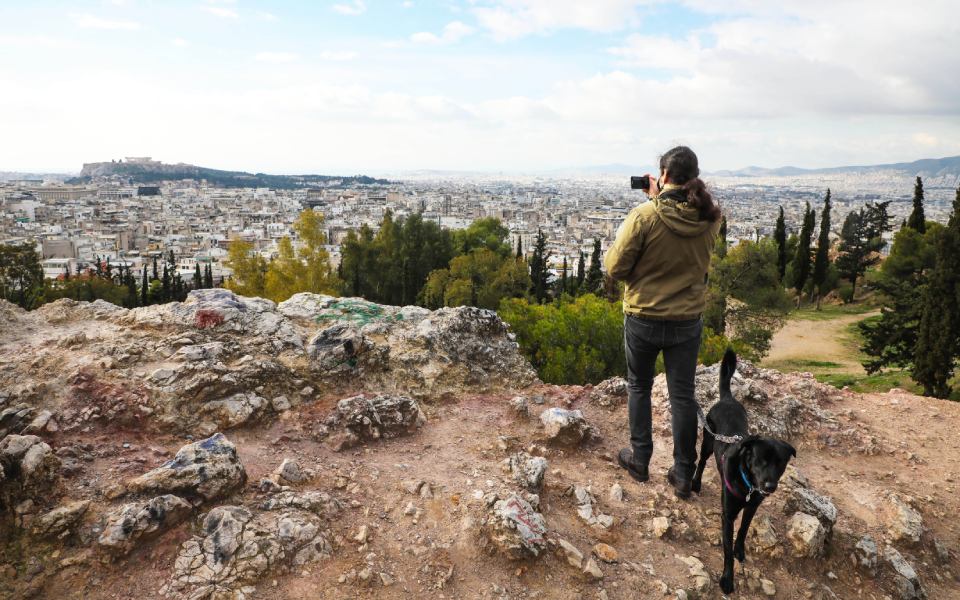Following an informal internet survey of various friends who grew up, live or work in the neighborhood, I came to the conclusion that the most fitting name for this area – the starting point of our journey – is Panathinea.
Sounding slightly old fashioned, it continues to be used informally to this day, in a sort of homage to the much-loved cinema of the same name that was once located on Harilaou Trikoupi Street in downtown Athens.
At the heart of Panathinea is Argentinis Dimokratias Square (formerly Kyklovorou) along Alexandras Avenue, flanked by Harilaou Trikoupi and Laskareos streets.
I love this square dearly. For me, it combines European “normalcy” with Athenian weirdness. On one side its shape is awkward, as if someone took an elongated slice of green and pasted it on Alexandras Avenue. On the other, its atmosphere – the tall leafy trees, the bushes with square tops, the lampposts, the dark-green benches, the discreet pathways, the rubbish bins with inbuilt ashtrays – combine to convey a very well-maintained image.
The setting is completed with the bust of General José de San Martín, the liberator of Argentina, and a marble statue with dolphins, conches and curly haired boys with seashells.
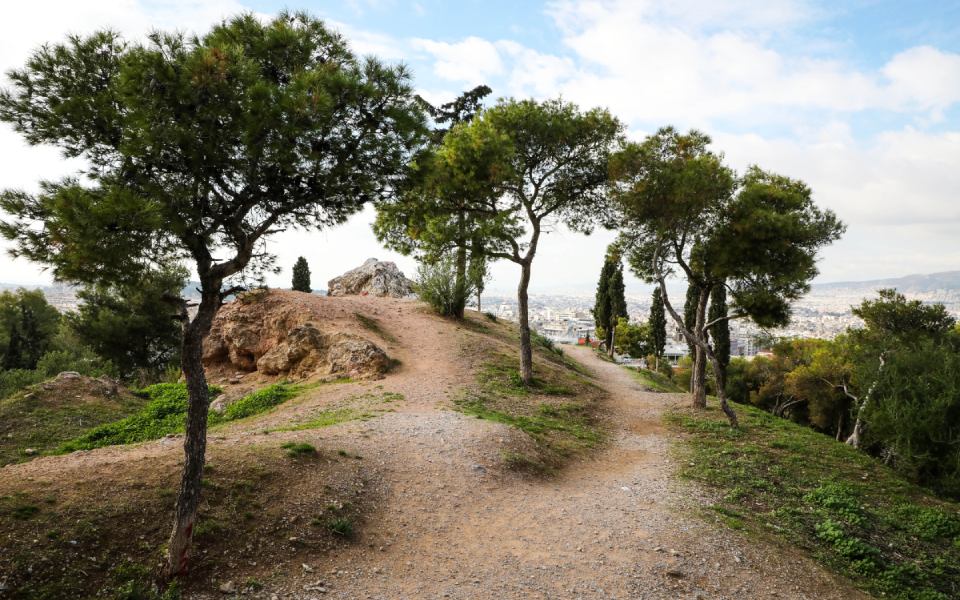
© Nikos Kokkalias
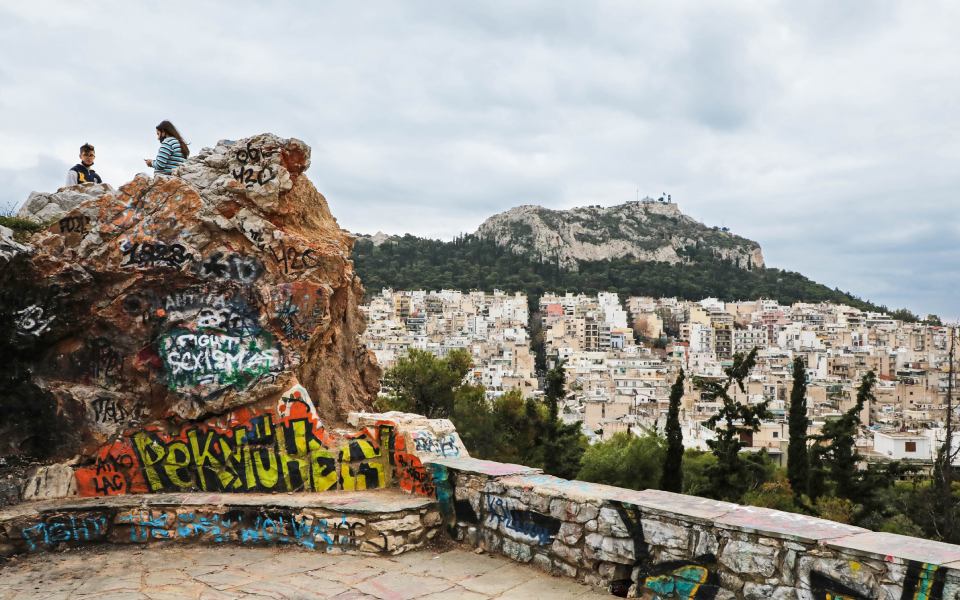
© Nikos Kokkalias
I head towards Fanarioton Street and turn left on Mavromichali, where to this day an amazing complex of two identical neoclassical buildings survives – one multicolored, the other rather drab. Decorative golden figures and green grapes on the balcony railing of the former; grey figures and grey grapes on that of the latter.
From Mavromichali I take a right on Isavron and walk up the steps to Strefi Hill, the hill of hills, which combines urban, bourgeois and revolutionary elements like no place else. Imposing, once well-kempt buildings coexist with apartment blocks bedecked with laundry, while at the same time the area is covered in graffiti and slogans about utopia, ecology and AEK Football Club.
Strefi Hill is truly special, not only because it is a meeting point for centripetal and centrifugal forces – namely the status quo and those opposed to it – but also because it is at one with the city due to its strategic location and small size.
And since it is a largely urban hill, far from the countryside, it has its blemishes – quite a bit of litter in parts, an abandoned, uprooted tree and so on. Ascending the dirt pathways and pedestrian walkway, through the pine and cypress trees, I remember everything I had read about the history of the hill – it used to be a clay quarry that supplied pitharia (amphorae) and was also where pinakotes (wooden dough bowls) were made for the surrounding areas; thus it was once named Pitharadika and Pinakota after these products.
They say it belonged to the Strefi family, and urban legends claim that Mrs. Strefi, the wife of the quarry owner’s brother, could not stand the dust and, as a result, the land was planted with trees.
In antiquity, Strefi Hill was most likely called Agchesmos (there is an engraved sign that indicates this name). In any case, from its peak one can take in a panoramic view of Athens, nearby Lycabettus Hill and, of course, the Acropolis, which can be admired as a whole, without any visual obstructions in between.
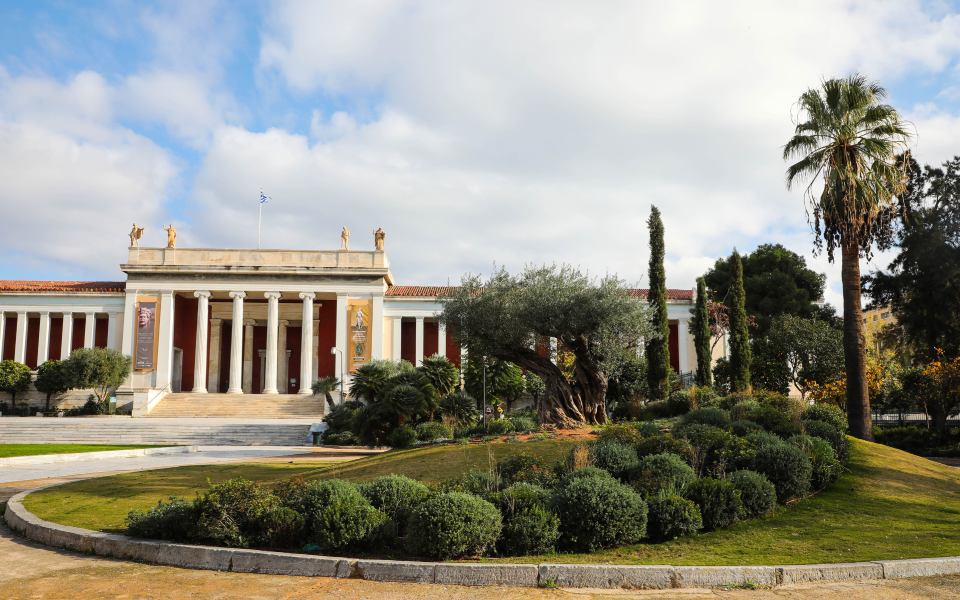
© Nikos Kokkalias
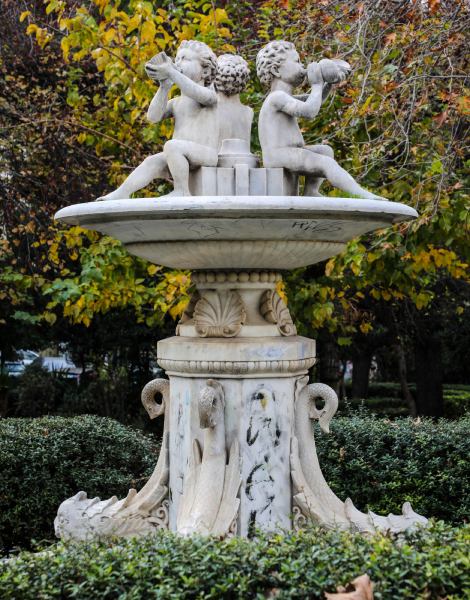
© Nikos Kokkalias
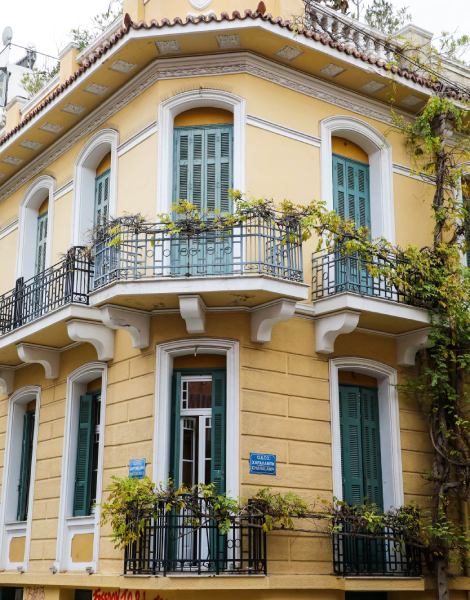
© Nikos Kokkalias
A Powerful combination
After a circular walk that takes me past the stone theater, I arrive at Anexartisias Street (near the basketball court). I descend the steps off Driadon Street, turn right on Kallidromiou, and left on Deligianni, which becomes Vasileos Irakliou, before arriving at the third and last park on my route – that of the National Archaeological Museum.
In the recently renovated garden of one of the most exciting museums in the world, just off the hustle and bustle of Patission St and among groups of nervous pigeons, my route connecting three small Athenian parks reaches its end. If you look at a map, you will notice that two much larger green spaces are located nearby – Lycabettus Hill and the Pedion tou Areos Park.
This hardly matters, though. Argentinis Dimokratias Square, Strefi Hill and the museum garden may be small in size, but they make for a powerful combination.
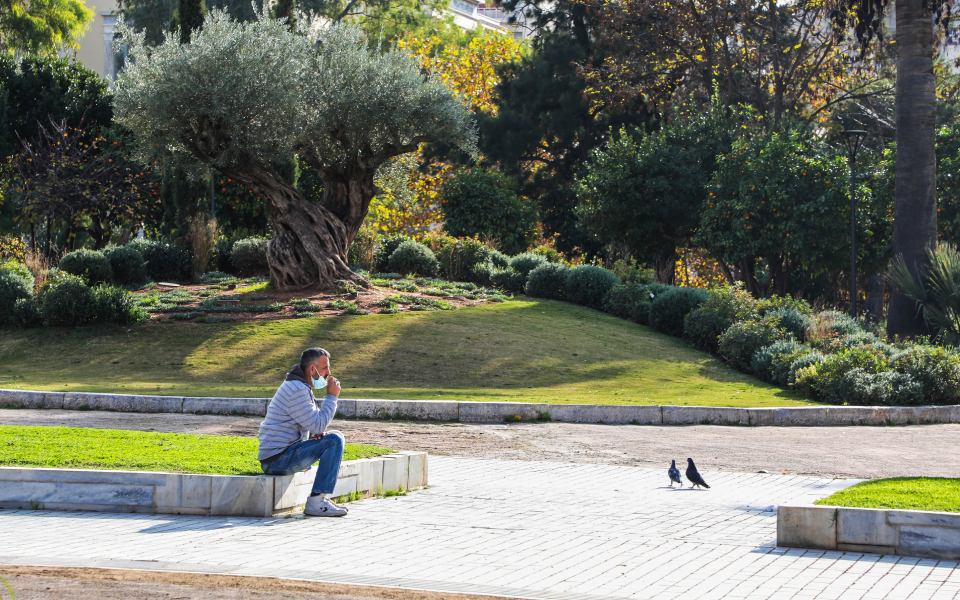
© Nikos Kokkalias
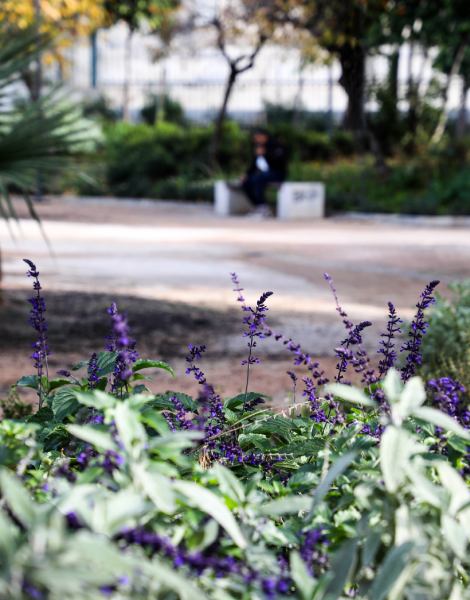
© Nikos Kokkalias
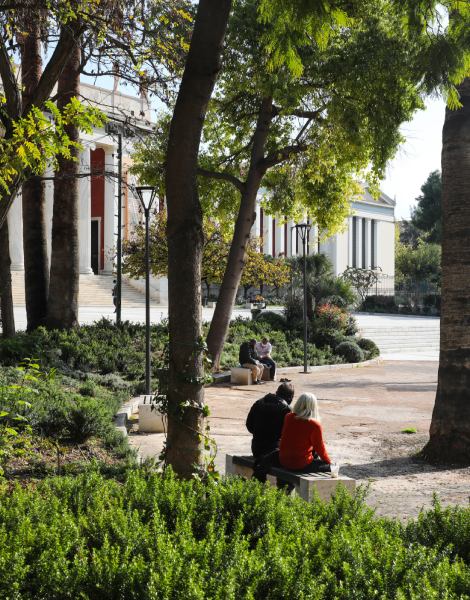
© Nikos Kokkalias
Lotus flowers, almond trees and vines
It was not long ago that the garden of the National Archaeological Museum, an expanse of approximately a hectare, was renovated, officially opening to the public last July. Coinciding with the pandemic was unfortunate, but when the measures are lifted it will be undoubtedly enjoyed by many.
Antonis Skordilis, a professor of botany at the University of Athens and chief executive officer of the landscape architecture firm Ecoscapes, which oversaw the project, explains the philosophy behind this renovation:
“We conducted a study, with sponsorship from Japan Tobacco International, that aims at expanding the visitors’ museum experience. Greek nature has remained largely untouched since antiquity, and the plants that feature in Homer’s epics are still around today. And since these plants are not particularly represented in the city’s urban green spaces, we decided to reintroduce them.
“A hill was created in one of the two large round green spaces, where we planted an ancient olive tree that is almost 1,300 years old.” (The tree, which comes from Arcadia, was uprooted due to road works and was preserved in a nursery.) “Various Mediterranean bushes were planted around the olive tree, following the rule of the golden mean championed by the ancient Greeks.”
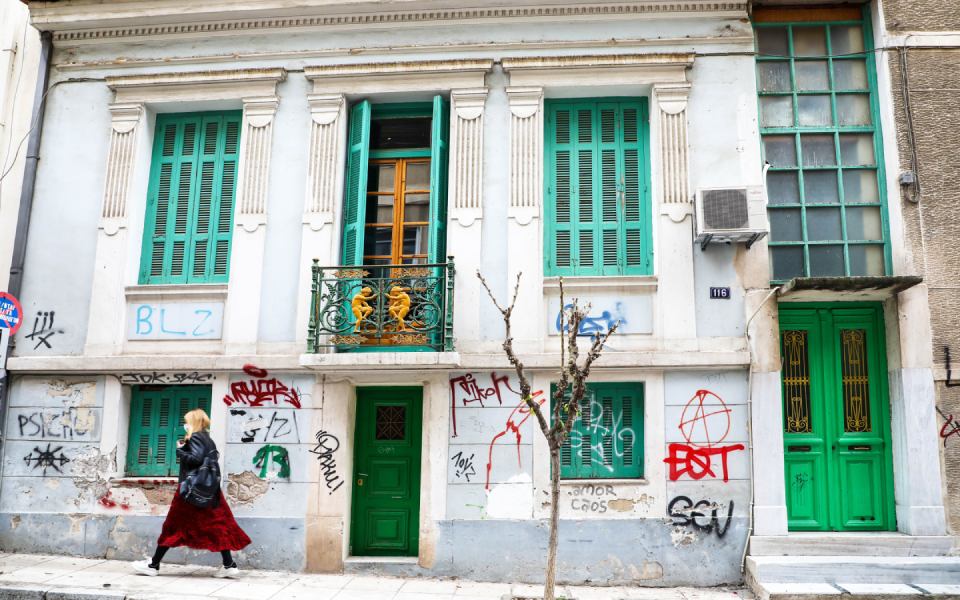
© Nikos Kokkalias
The collection of herbs includes at least 100 different species, “oregano, dittany, thyme, Jerusalem sage as well as many species of aquatic plants that have been associated with the nymphs of the rivers and streams.” And many more that conceal darker aspects of Greek mythology, such as “giant fennel, the plant Prometheus used to bring fire from the gods to humans.”
The choice of plants in the extremities of the garden is also very interesting. “We used a plethora of Mediterranean plants to create a landscape that looks like the one European travelers would have encountered.”
In other words, it is an homage to the Arcadian ideal, recreated through the use of many fruit bearing plants such as lotus flowers, almond trees and vines.
This article was first published in Greek on kathimerini.gr

